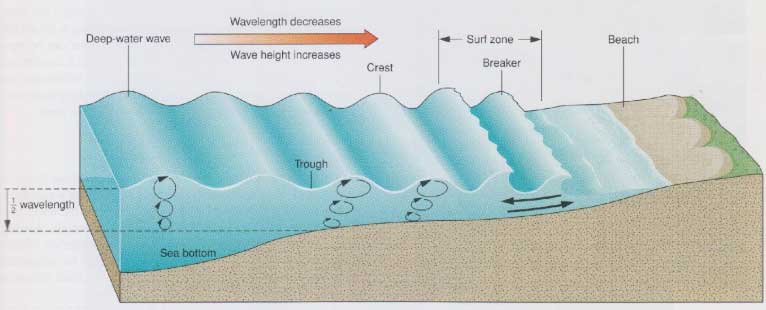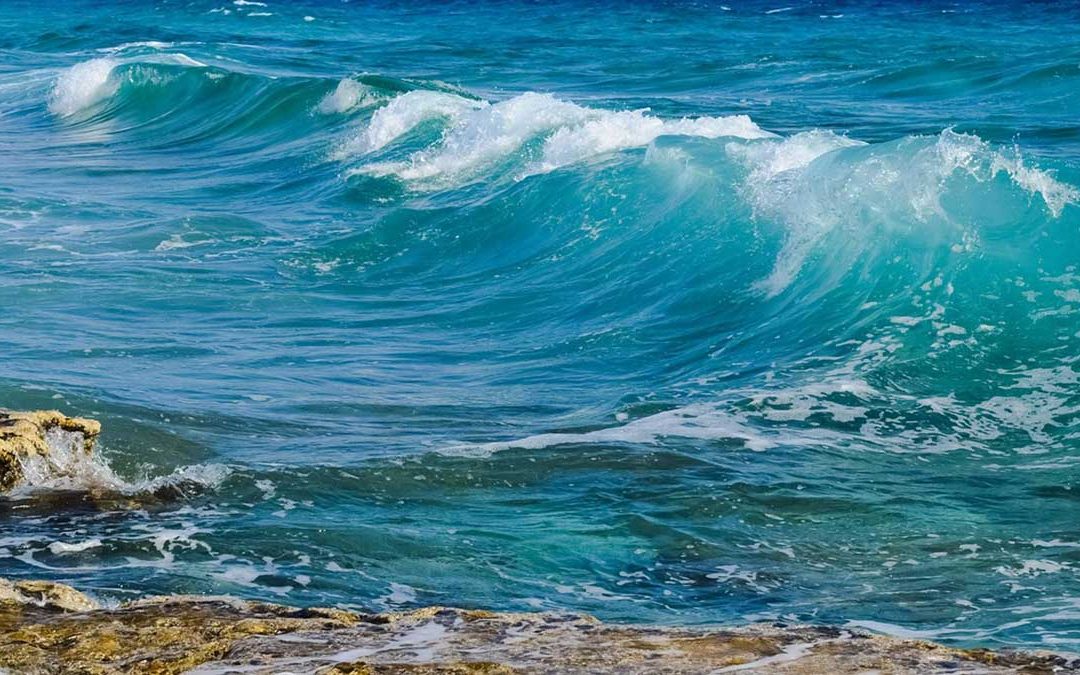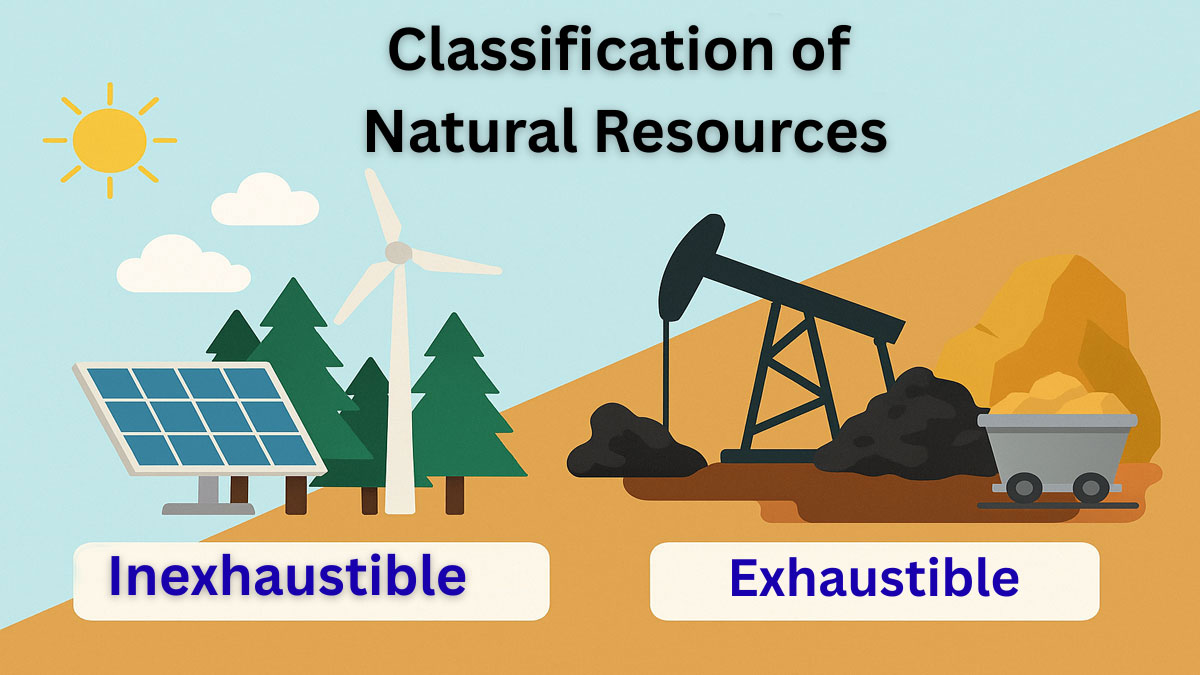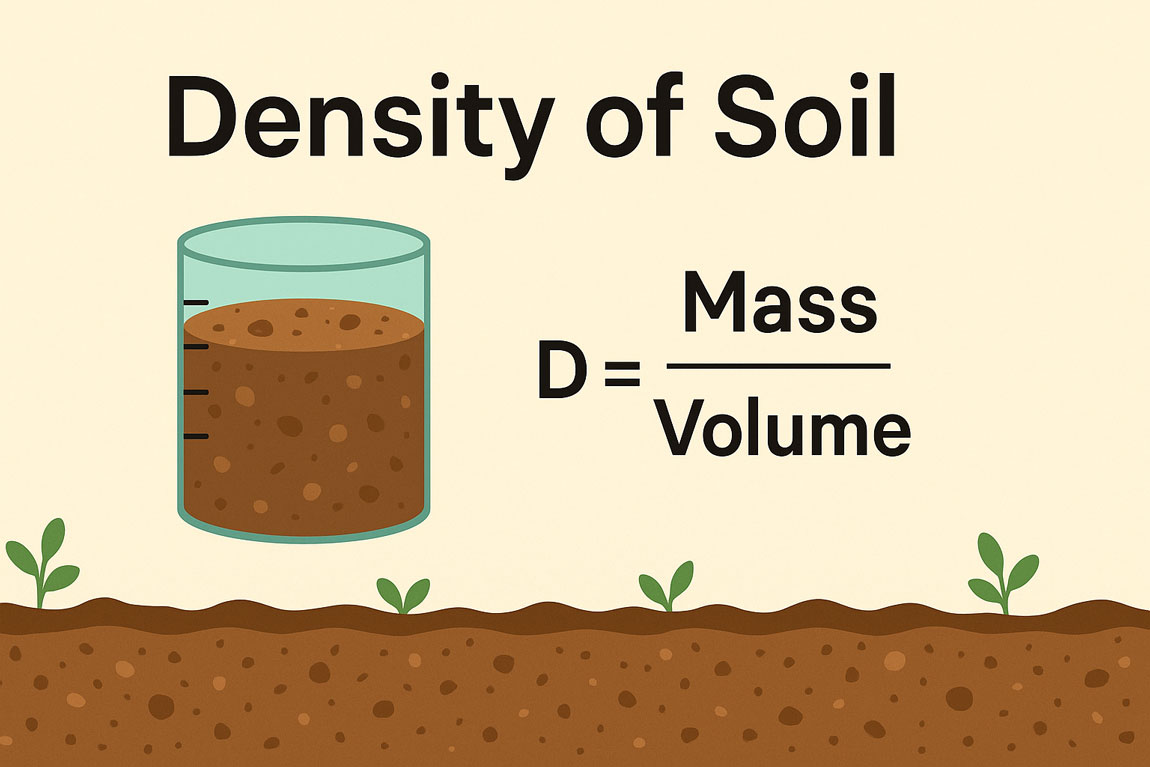- The energy that moves sand along a beach comes from the wind-driven water waves that break upon the shore. As wind blows over the surface of an ocean or a lake, some of the wind‘s energy is transferred to the water surface, forming the waves that move through the water.
- The height of waves (and their length and speed) are controlled by the wind speed, the length of time that the wind blows, and the distance that the wind blows over the water (fetch).
- Wave shapes can vary. Short, choppy seas in and near a storm create a confused sea surface, often with considerable white foam as strong winds blow the tops off of waves. Long rolling swells form a regular series of similar-sized waves on shores that may be thousands of kilometers from the storms that generated the waves.
- The height of waves is the key factor in determining wave energy. Wave height is the vertical distance between the crest, which is the high point of a wave, and the trough, which is the low point.
- Wavelength is the horizontal distance between two wave crests (or two troughs). Most ocean wind waves are between 40 to 400 meters in length, and move at speeds of 25 to 90 kilometers per hour in deep water.
Components of Water Waves

- In the open ocean, normal waves have heights of about 0.3 to 5 meters, although during violent storms, including hurricanes, waves can be more than 15 meters high.
- The highest wind wave ever measured was 34 meters by the anxious crew of a ship in the north Pacific in 1933. The highest tsunami ever measured, caused by a submarine earthquake rather than wind, was 85 meters, in the Ryukyu island chain south of Japan in l971.
- The movement of water in a wave is like the movement of wheat in a field when wind blows across it. You can see the ripple caused by wind blowing across a wheat field, but the wheat does not pile up at the end of the field. Each stalk of wheat bends over when the wind strikes it and then returns to its original position.
- A particle of water moves in an orbit, a nearly circular path, as the wave passes; the particle returns to its original position after the wave has passed. In deep water, when a wave moves across the water surface, energy moves with the wave; but the water, like the wheat, does not advance with the wave.
- At the surface, the diameter of the orbital path of a water particle is equal to the height of the wave. Below the surface, the orbits decrease in size until the motion is essentially gone at a depth equal to half the wavelength. This is why a submarine can cruise in deep, calm water beneath surface ships that are being tossed by the orbital motion of large waves.
Orbital Motion of Water Waves
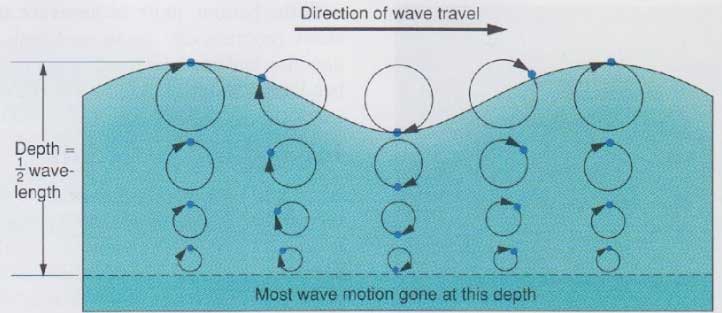
Surf
- As waves move from deep water to shallow water near shore, they begin to be affected by the ocean bottom. A wave first begins to “feel bottom” at the level of lowest orbital motion-Surf zone that is, when the depth to the bottom equals half the wavelength.
- For example, a wave 150 meters long will begin to be influenced by the bottom at a water depth of 75 meters. In shallow water the presence of the bottom interferes with the circular orbits, which flatten into ovals. The waves slow down and their length decreases.
- Meanwhile, the sloping bottom wedges the moving water upward, increasing the wave height. Because the height is increasing while the length is decreasing, the waves become steeper and steeper until they break.
A breaker is a wave that has become so steep that the crest of the wave topples forward, moving faster than the main body of the wave. The breaker then advances as a turbulent, often foamy, mass. Breakers collectively are called surf.
